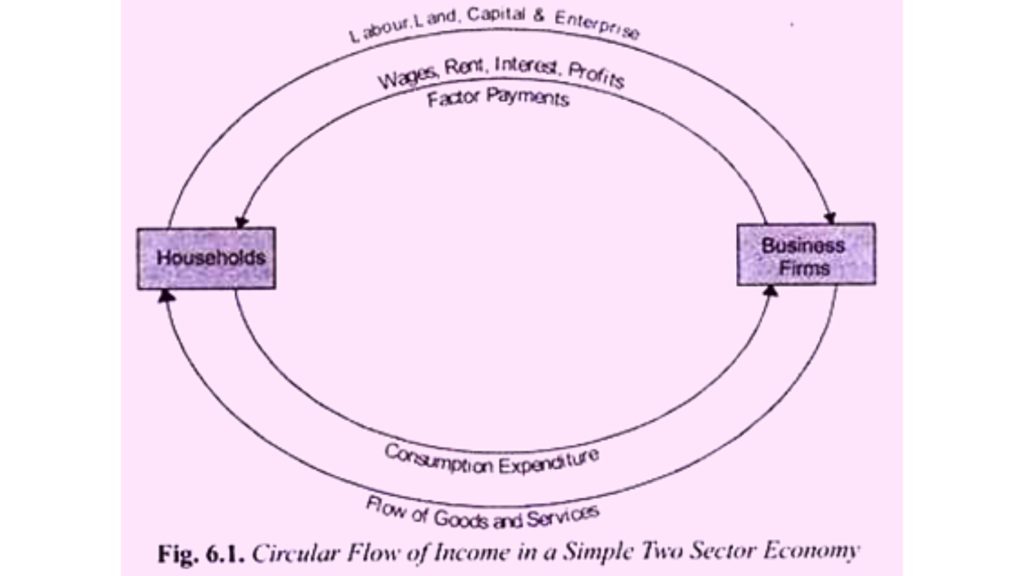Circular flow of income questions.
Are the following statements true or false? Give reasons.
In a two-sector economy, there is no leakage from the flow of income.
Ans. False. Leakage from the flow of income occurs, when factors of production do not spend their income.
There are three phases of the circular flow of income.
Ans. True. Production, distribution, and disposition of income are three phases of circular flow.
In a two-sector economy, the condition of equilibrium is ;
Y = C + I = G
Ans. False. In a two-sector economy, Y = C + I is the equilibrium condition of a circular flow of i
Real flow is also known as nominal flow.
Ans. False. Money flow is known as nominal flow. Real flow is another name of physical flow.
In a two-sector economy, total production is always equal to total consumption.
Ans. True. Because firms sell their entire output to the households.
The circular flow of income takes place only in an open economy.
Ans. False. Even in the case of a closed economy, a circular flow of income takes place between houses and
firms.

Bread purchased by a seller is a final good.
Ans. False. Because it is meant for resale. So, it is an intermediate good.
Bread purchased y a household is a final good.
Ans. True. Because it is final consumption good.
All capital goods are producer goods.
Ans. True. Because they are used as final investment goods
Capital formation is a flow Ans. True. Capital formation is measured per unit of time
The use of raw material is a consumption good. Ans. False. The use of raw materials helps in the production process. Therefore, it is an intermediate good.
Purchase of a car can be categorised as an intermediate good. Ans. True. Purchase of a car can be categorised as an intermediate good if purchased by the government for the military use of it is purchased by a car dealer for resale.
A good can be an intermediate good in one case and a final good in another case. Ans. True. A good can be an intermediate good as well as a final good, depending upon its nature of use. For example, a car purchased by a household is a final good, whereas it will be an intermediate good if it is purchased by a car dealer.
The concept of a normal resident applies to individuals only. Ans. False. The concept of normal residents applies to institutions also, in addition to individuals.
No value is added to final goods. Ans. True. Because final goods have crossed the production boundary.
The same good may be a consumption good in one case and a capital good in another case.
Ans. True. A car purchased by a household is a consumption good, while the car purchased by a taxi
operator is a capital good.
The market price is always more than the factor cost.
Ans. False. Market price can be less than factor cost if net indirect taxes (NIT) are negative. Market
price can also be equal to factor cost if NIT is zero.
Expected obsolescence is a ‘capital loss’.
Ans. False. Unexpected obsolescence is a ‘capital loss’. Expected obsolescence is a part of depreciation.
Expected accidental damages during the process of production are a part of depreciation.
Ans. True. It is considered as a part of depreciation, as it happens in the process of production.
Saving is a stock.
Ans. False. Savings are flow, as these are related to a period of time.
In national income accounting, residential houses are treated as consumer goods.
Ans. False. Houses are treated as capital goods because they continue to provide housing services for
a long.